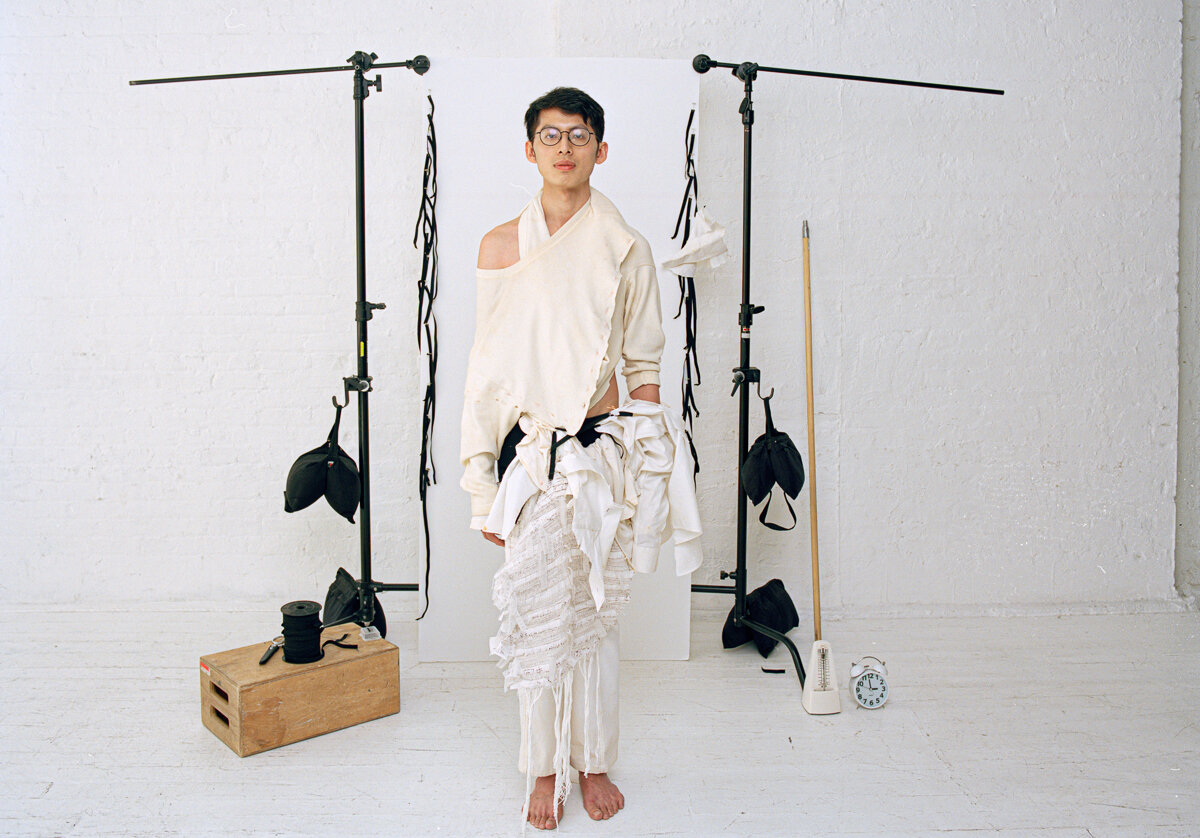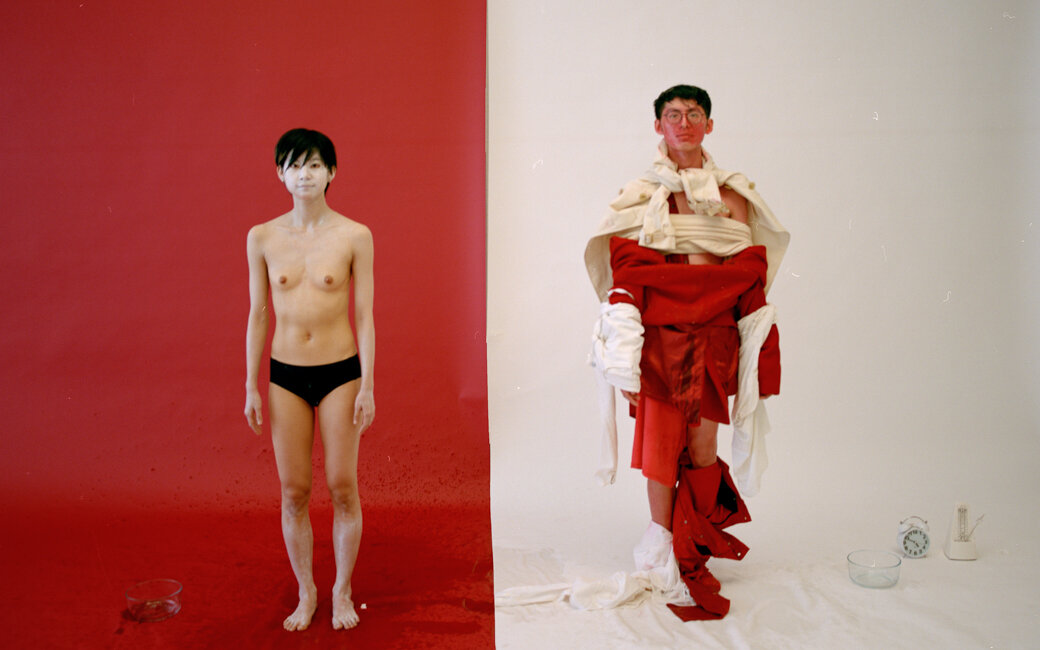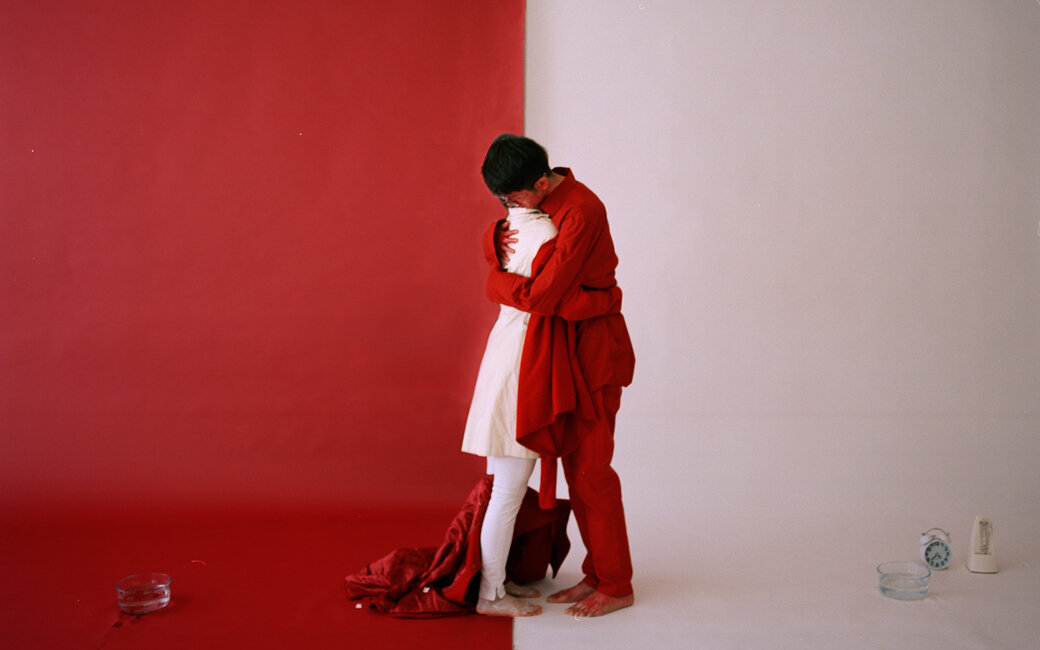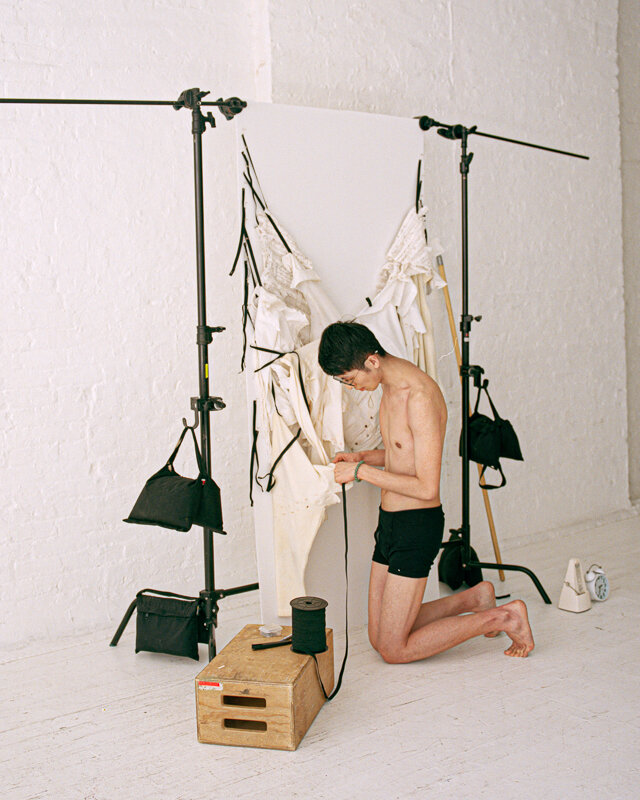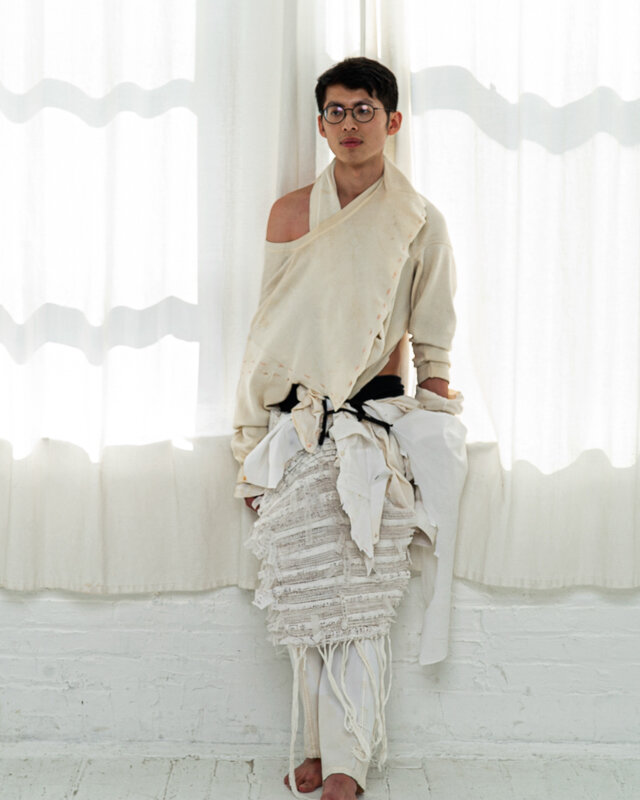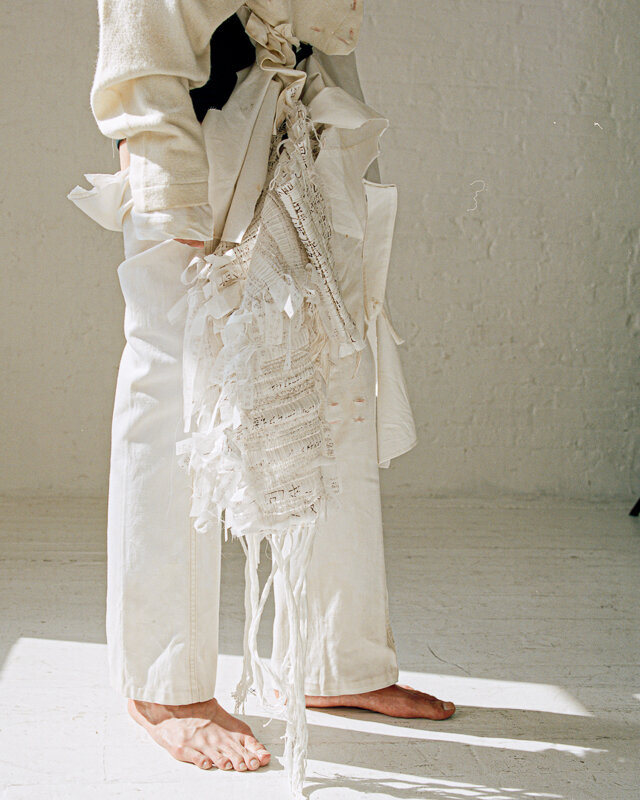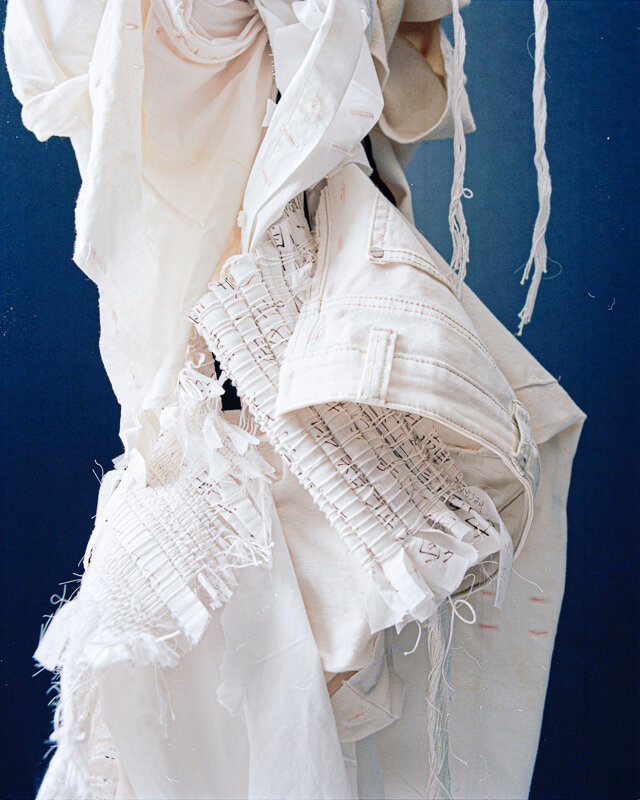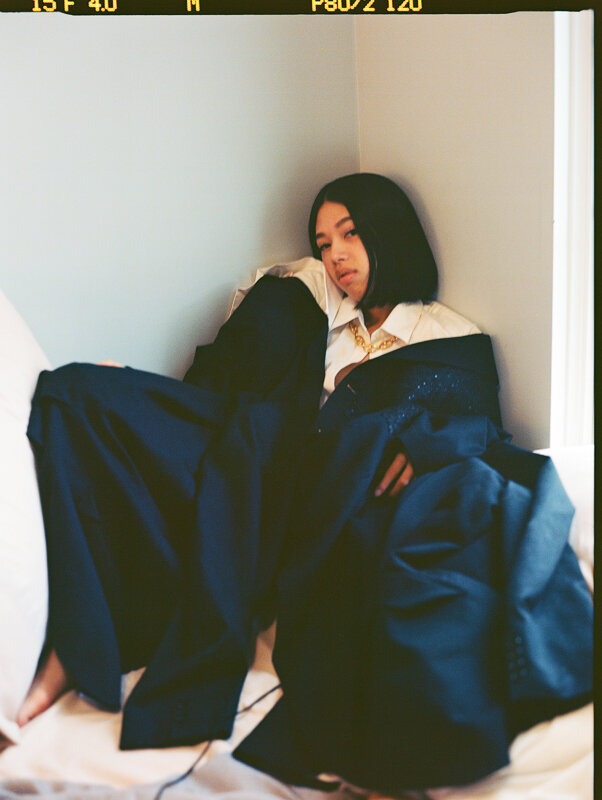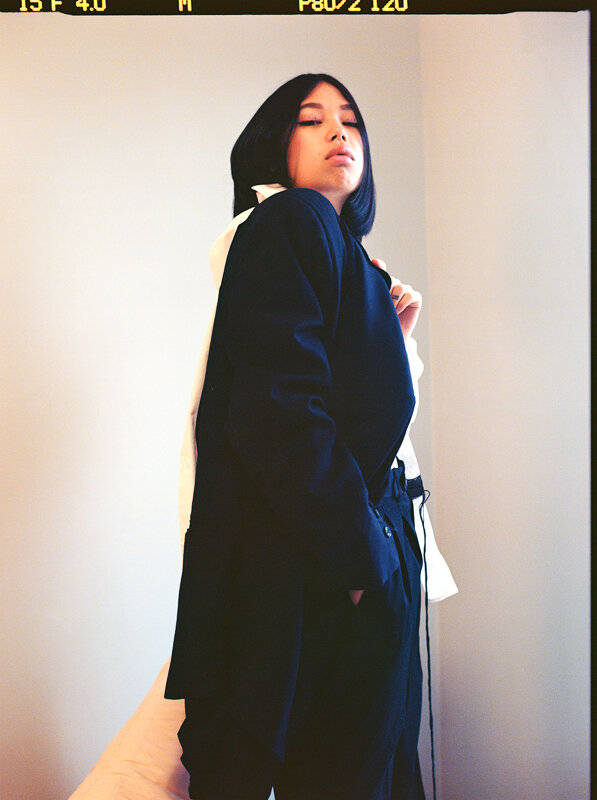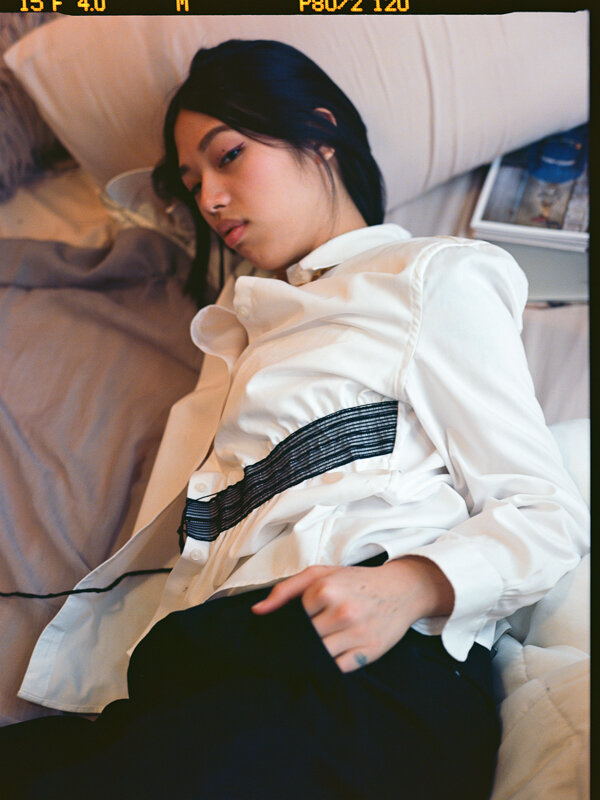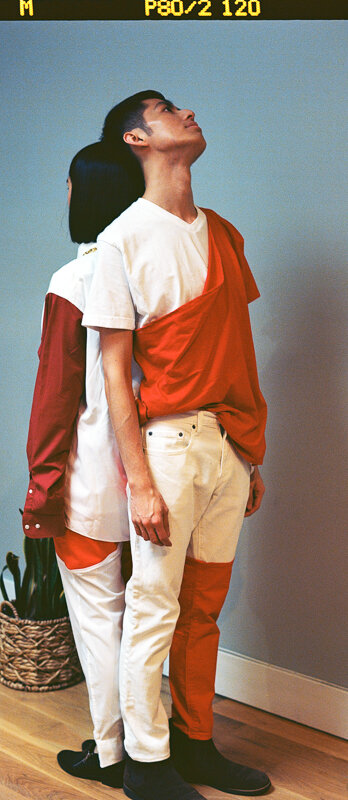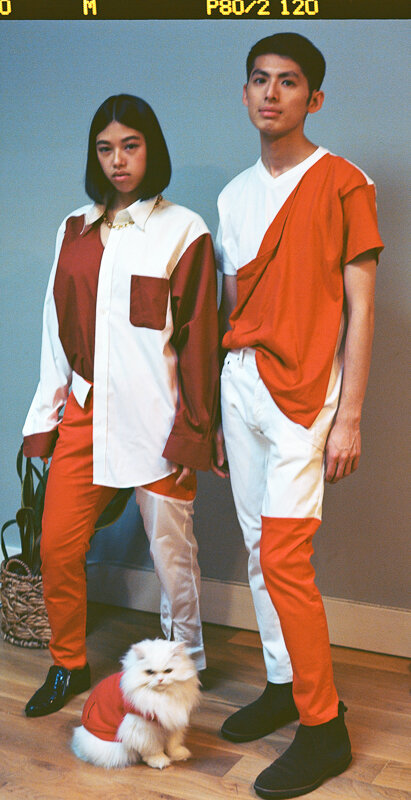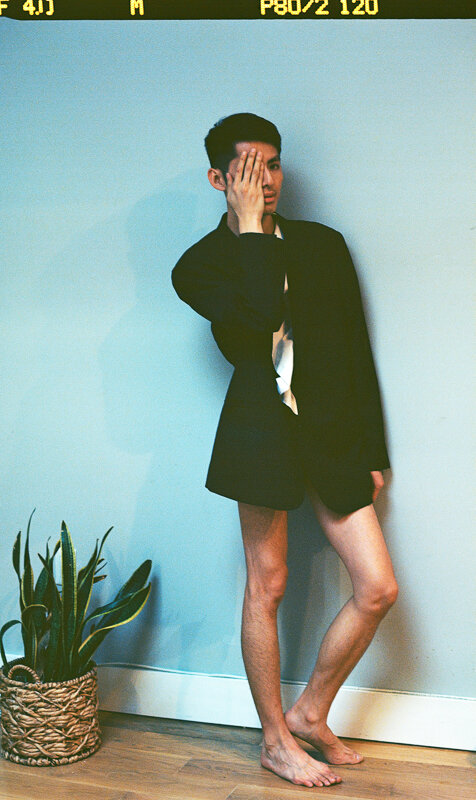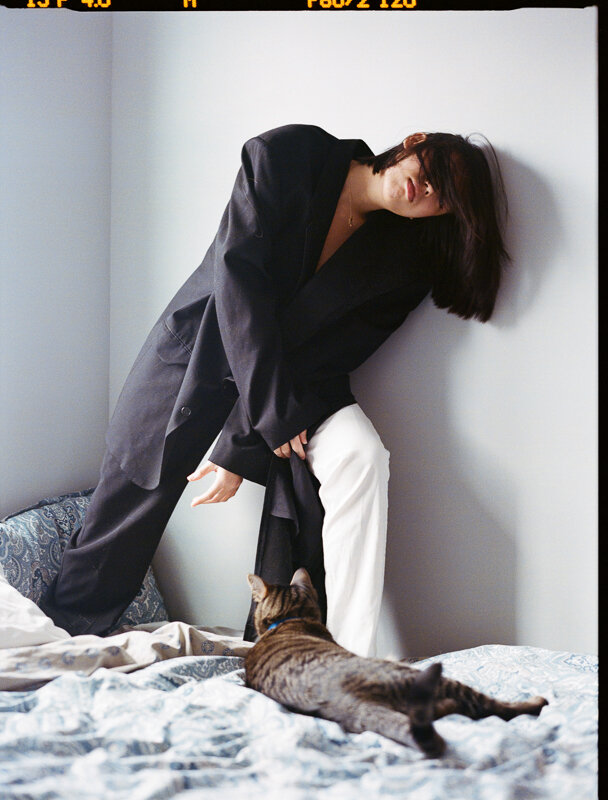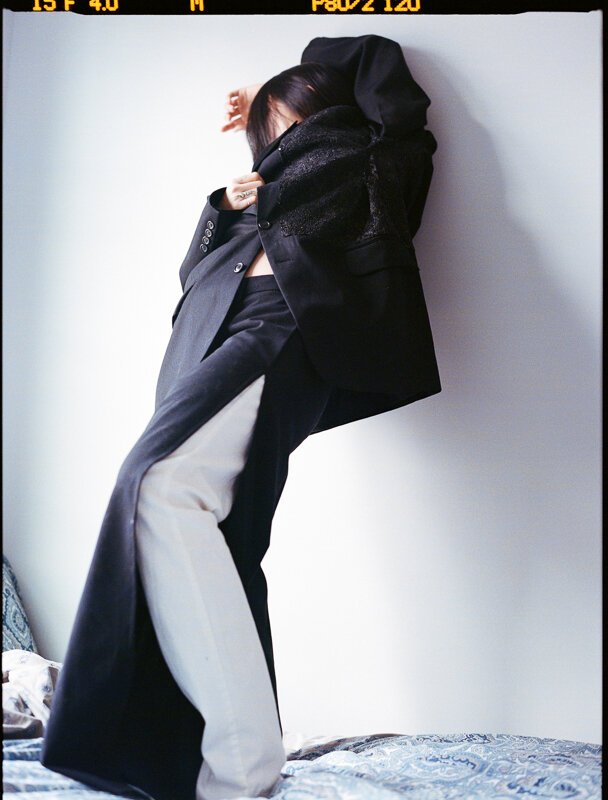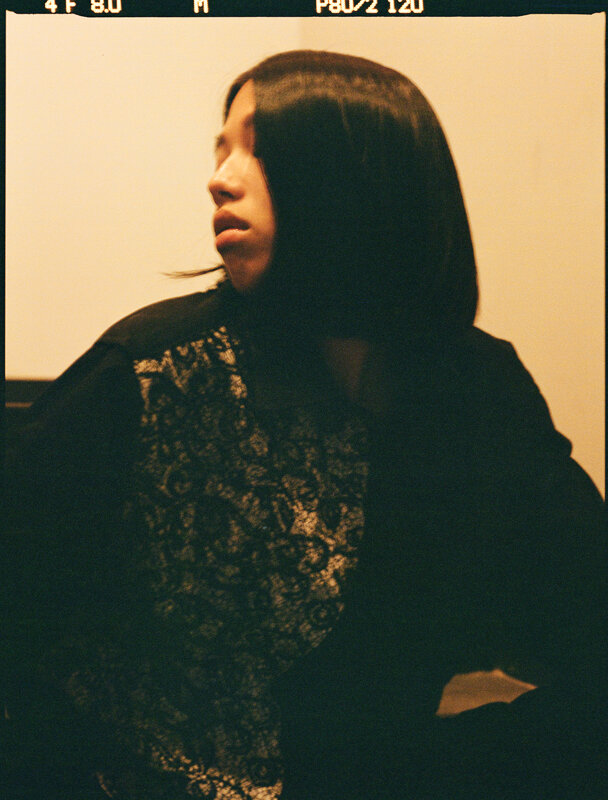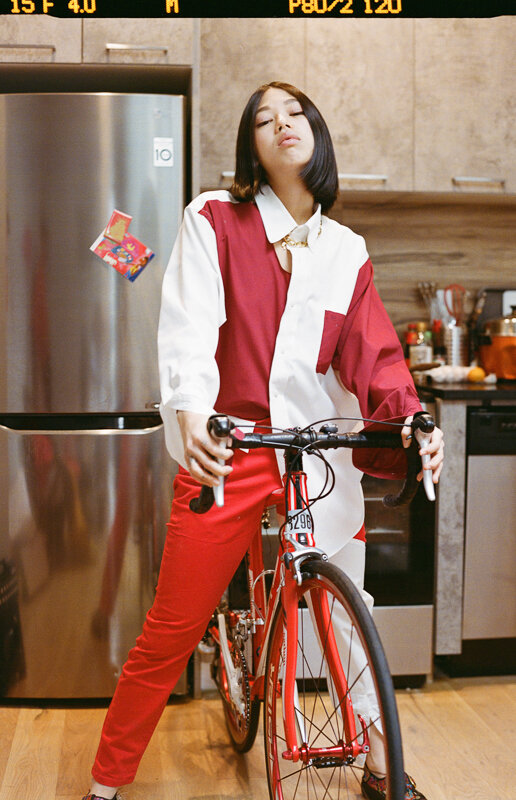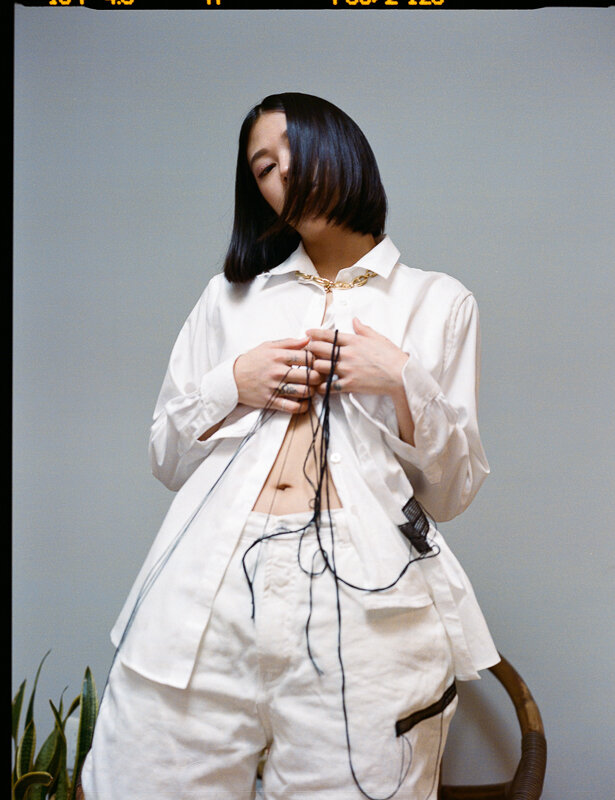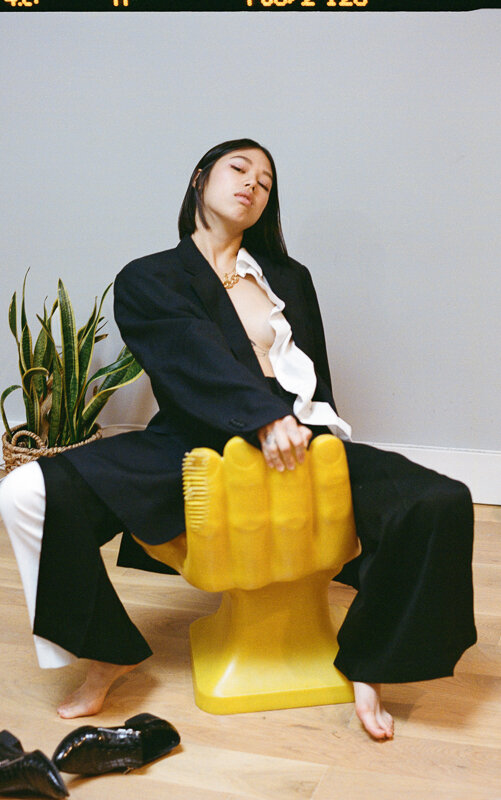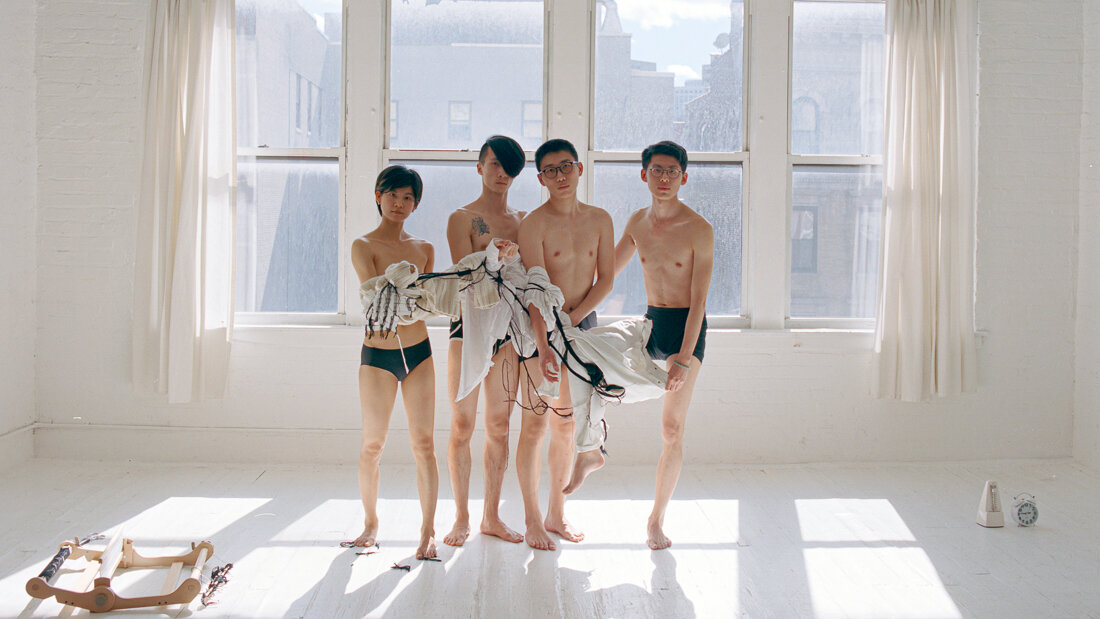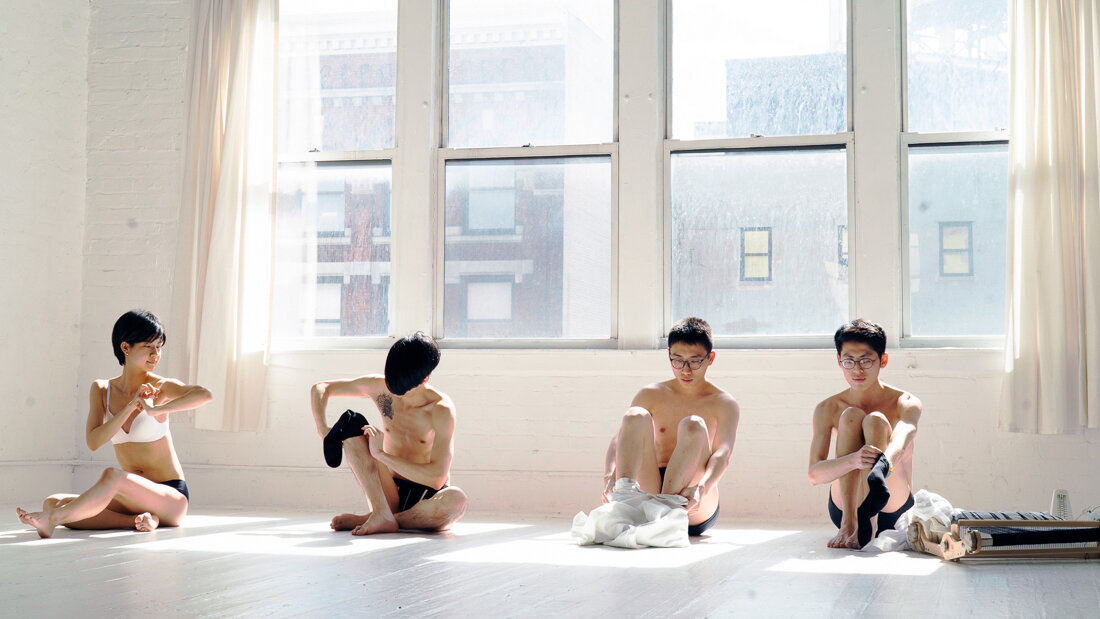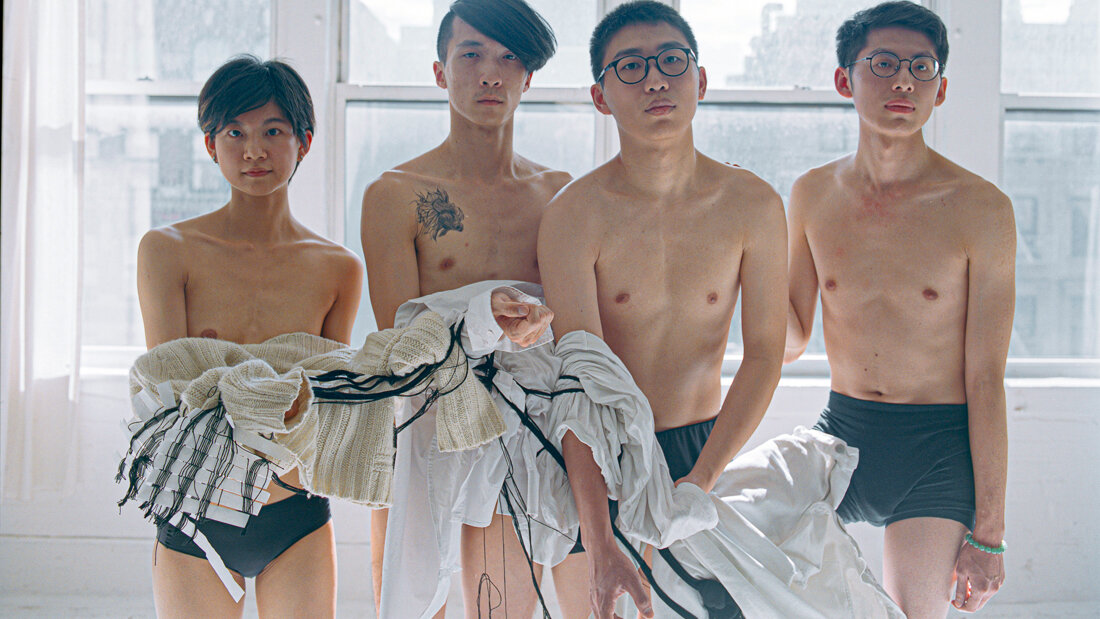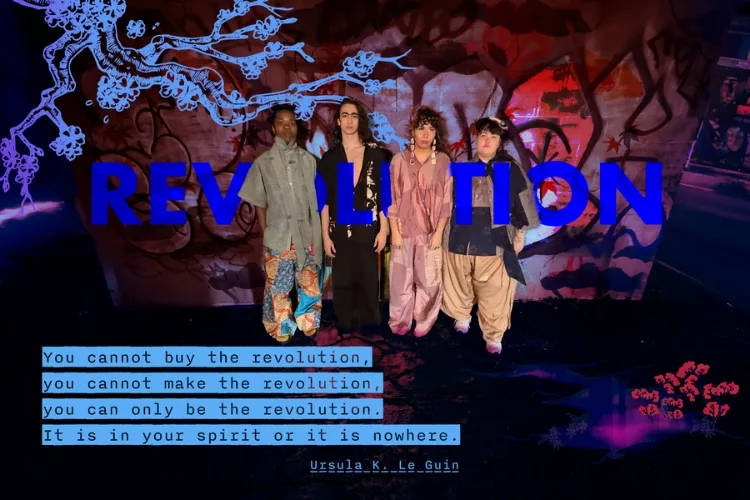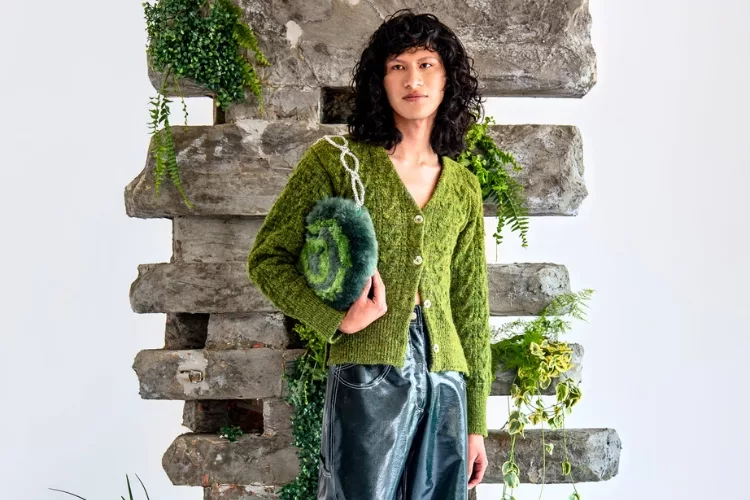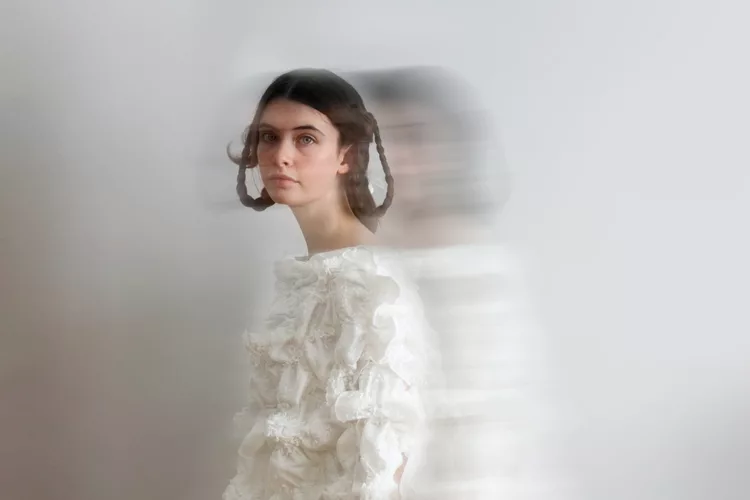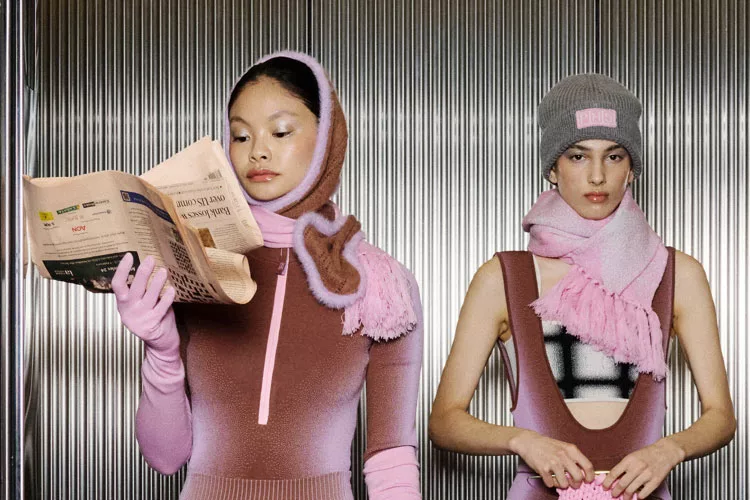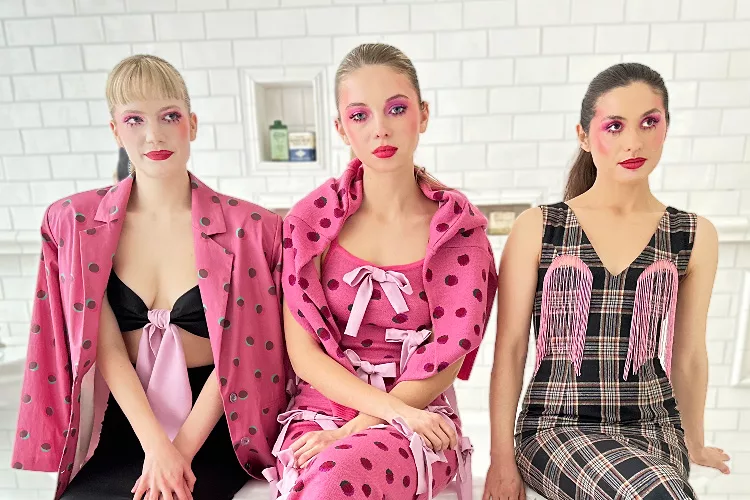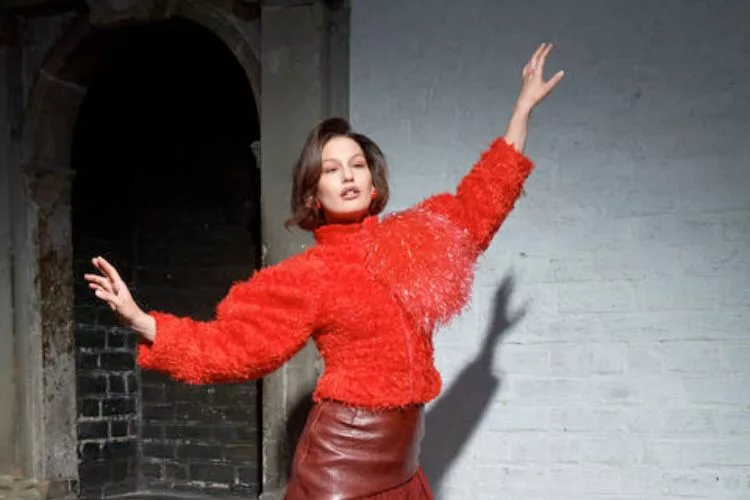What does it mean to be going into the fashion industry today? In this new series we’ll be talking to students and recent graduates about their process, work and how they see their future in fashion.
I love you but I have to leave you
& other thoughts by YunRay Chung
YunRay Chung is in the first graduating class of the Fashion Institute of Technology’s new MFA program in fashion design. He is a combination of a fashion researcher, concept developer, and performance artist and we recently met up at the café in the Guggenheim to talk about his work. He had sent me images from a collection he had done for Goodwill (more on that below) but doing due diligence I checked out his website and was surprised to find videos that were edited documentation of performances front and center. Not what one typically thinks of when one thinks “fashion designer”.
The title of the video series / thesis (also created as a book series), “NEW AMERICANA” is a riff on “The Americans” by Robert Frank, whose raw and honest images moved YunRay and got him thinking about the new Americans, the immigrants. From that point he created these performances looking at immigration from a human and emotional perspective and this is where we began our discussion.
I was looking online at your videos online. You have one called “I love you but I have to leave you.” Do you have to leave? Or is that more psychological?
It’s not about here, it’s me talking to my home country Taiwan. I left already and it’s about this journey. The first part is about breaking away from your old position/ your culture /your language barrier and just trying to be open to the new things. The courage of starting it. So that is the first of four videos in the series all looking at the experience of being an immigrant in a new country.
Yes, we hear so much about the plight of illegal immigrants or those seeking political asylum and (hopefully) have great empathy for them, but we –or at least I, speaking for myself– never considered the difficulties that people who move to places that are completely foreign to them encounter. So I found your videos really interesting on that level –and how you incorporate a refashioning of clothing as a central part of the process. Can you briefly talk about your other videos?
Yes, Leave a Mark on I is about how we try to learn so much about the new country and the two performers exchange clothes like trying on cultures. In the end all of the clothes stay on one person like a burden.
The third video is Aren’t We All Confused? explores the process of breaking one’s old self in order to build a new identity to survive and blend in the new country. Here it is one person stuck between two cultures. The garments are continuously cut apart and put back together awkwardly like we are breaking and remaking ourselves in the process.
New Americana 4, the last in the series, is called I Have Become Me Now. It has 4 performers in a row and the first one tries on a garment and passes it to the next who does the same and it continues until the last performer takes them and weaves them into a loom. The garments came from fabrics, but by weaving the garments they won’t turn back to fabric. After our experience in a new country, we cannot go back to how we were, but we are not the new country too, but it is okay, as the performers trying on the woven garments, we are a community, and it is okay.
I think this is all really compelling – because we all know that what we wear is a form of communication –whether it’s as basic as a police officer’s uniform signaling a certain authority or someone decked in head to toe Gucci signaling an alliance with conspicuous consumption and the wealth it implies. But this isn’t traditional fashion design –so how did you get into fashion?
I wanted to be a fashion designer since I was little –Project Runway and all that– but I grew up in Taiwan and my parents really wanted me to be a doctor. I ended up studying physical therapy for 4 years and got my license and then I said to my parents “Okay I got my license. This is the best I can do for you and now I want to try to do something that I want to do.” And moved to Los Angeles and got an Associates Degree in fashion at a school out there. And I started to do these smaller performance art pieces out there too. I think I got accepted into the MFA because of these (older) videos. The chair was looking for someone not from a traditional background so I was given an opportunity.
How was FIT as an experience?
It was hard. We were the guinea pigs as the first class. but it made me the designer I am today and it shaped to a degree who I am today. It pushed me both in performance and design.
Did you come into the program knowing you were going to be creating these performance art pieces?
No actually at first I had some resistance. I was holding on to this idea of the traditional fashion designer but once I let it go the performance aspect really spoke to me. I would see someone like Marina Abramović and see the power of simple interactions or working intentionally with time. And also seeing how you have to be there to truly experience it really resonated with me. So the ephemeral nature appeals to me.
You recently did a collaboration with Goodwill where you were part of a select group of designers invited to use donated clothes and upcycle them to be resold at Goodwill. How did you get involved with this?
Well I’ve been using Goodwill clothes in all my performances but still for a very long time I was very resistant to making clothes from secondhand garments. …like I was lazy or “oh someone else did all the work I just fixed it a little bit” or feeling like it’s other people’s work and I’m just adding something.
Right, like it’s “decorating”
Yeah! I just questioned it. but also I’ve been very conscious of sustainability. It is actually a big conversation between me and my classmates –how to be creative and also sustainable because it’s such a hard push and pull. You want to get the best fabrics you can get, or be more creative and try 100 different drapings but then you’re wasting all these fabrics. There are so many things to consider and a lot of classmates ended up resisting sustainability a little bit per se because of that.
“And I was kind of going through the same thinking it’s like, I want to be creative and how can I be creative while trying to be –not just sustainable because it’s such a big term– but to do a bit better?”
But through my process I started to realize “okay this is something I can actually do: work with second hand garments. I embraced this identity and saw, that even though they were originally made by someone else, I’m making clothes with my performance and my body and that conscience decision is design itself.
Yes, there seems to me something especially appropriate in you using second hand garments when talking about experiences of immigration/being the other/trying on new cultures…
Yes! So I actually contacted Goodwill last year and asked them to sponsor my thesis with some clothing but I didn’t hear back until July at which time they said they were starting a new program asking different designers to remake some of the clothing which they would buy back and sell for a higher price.
At the time I had a lot of ideas I was developing around upcycling so it was great timing and I thought it was interesting to see how some of my ideas could be simplified to be sold. I picked the pieces according to the (prior) performance I had – so there was a connection. So the color palette and some of the techniques are related – like the weaving in the last performance. I found zigzagging the yarn… telling the story through a more sellable way
[editor’s note: this collection is currently available at the Goodwill on west 8th street]
Now you’ve graduated. What’s next for you?
In my MFA I developed this idea of how to blend these 2 ideas together -slow fashion and performance. So I am thinking of something very slow. Doing a performance talking about something I care about and it will move into a concept collection and developing the clothing out of that which will be the collection once a year. Art pieces and then from that create a commercialized collection
I could see this becoming almost a gallery based practice. If there were other artifacts people would want to be part of it…
I want to be in this middle space between art installation and fashion.
How do you feel fashion designers will have to evolve to be relevant?
The program at FIT is really different. It’s very forward thinking. I don’t know what is the best way to stay relevant because in the future people still want to wear everyday clothes and they don’t care about the big ideas or tech per se. But I think we need to be more conscious of our decisions and more involved in all the issues. And young people are now looking into brands and seeing if they are being conscious and ethical and we also see a lot of greenwashing.
Yes I think George Monbiot kind of nailed it when he said “We are often told we are materialistic. It seems to me, we are not materialistic enough. We have a disrespect for materials. We use it quickly and carelessly. If we were genuinely materialistic people, we would understand where materials come from and where they go to. But, at the moment, the entire global economy seems to be built on the model of digging things up from one hole in the ground on one side of the earth, transporting them around the world, using them for a few days, and sticking them in a hole in the ground on the other side of the world.”
Yes, and I think it used to be better and I know some designers who are very hands on, doing knitting etc. and they’re hoping this makes people more aware and cherish their clothes more and that’s one approach and then there’s people like me who are thinking of the recycling and not tossing things away in the landfill and others are thinking before production how can we eliminate waste prior to the clothes being made and draping on a computer instead of muslin. So I think there are many different routes to that but in the end you have to know what you’re doing.
I was watching a documentary on the designer Neri Oxman and she said she thinks in the future the kind of designer that only cares about aesthetics or beauty will not be relevant. I relate to that because we have to design our way out of our trouble right now and that’s why designers are actually valued. Not because we can create beautiful things but more about creating a structure or different ways of thinking or new materials or different approach to the whole thing.
All performance photos: Photographer: Steven Molina Contreras, Performers: Celine Lin, Jiang Feng, Chia-Hao Shen, YunRay Chung. Location: Candy Studio NYC.
Goodwill project editorial: Photographer: Kat Kuo Models: Yo Fu, YunRay Chung

